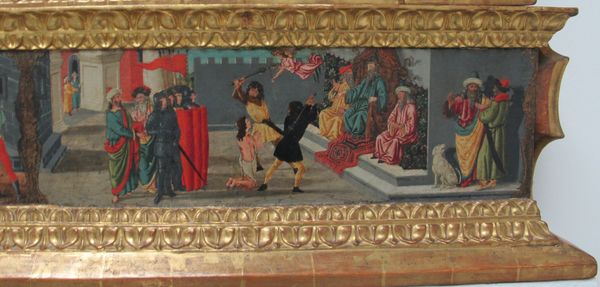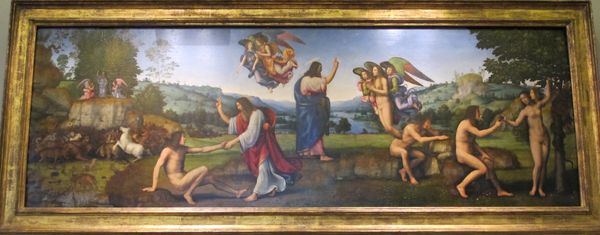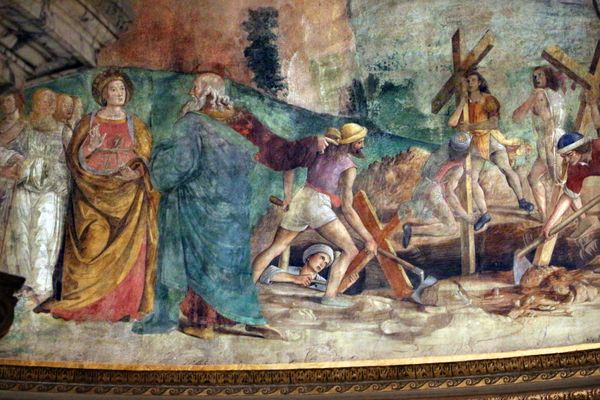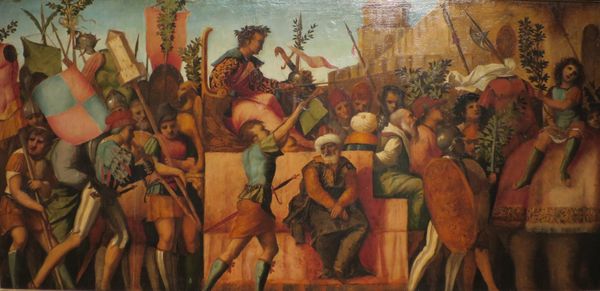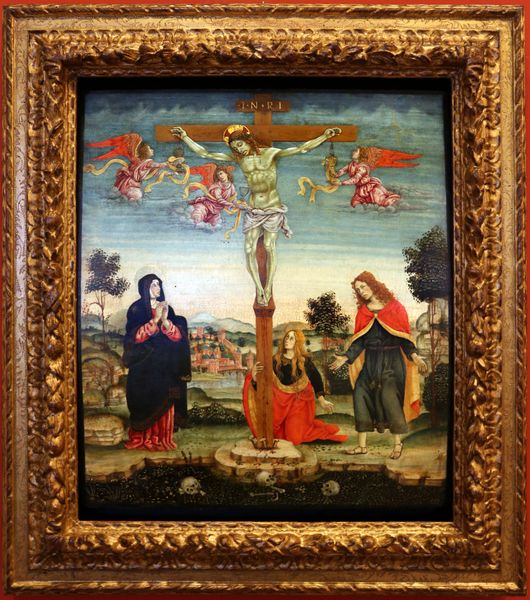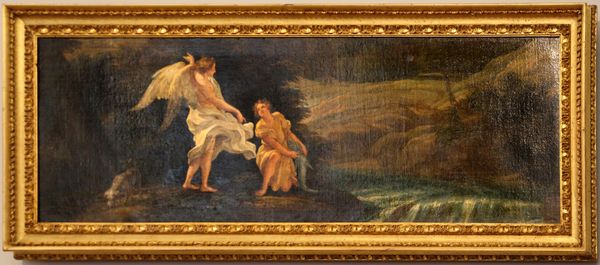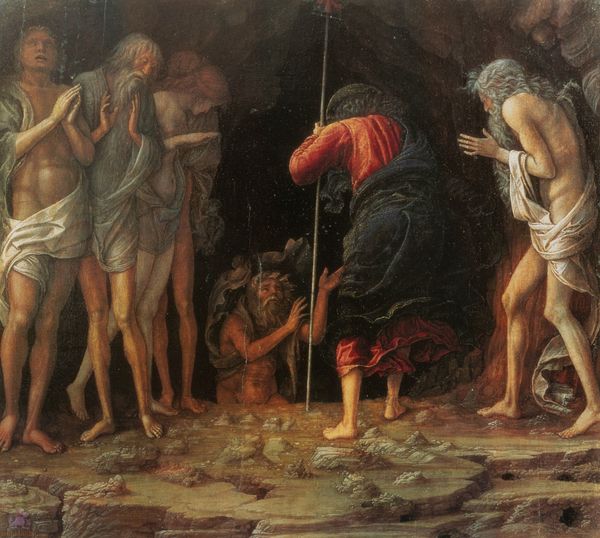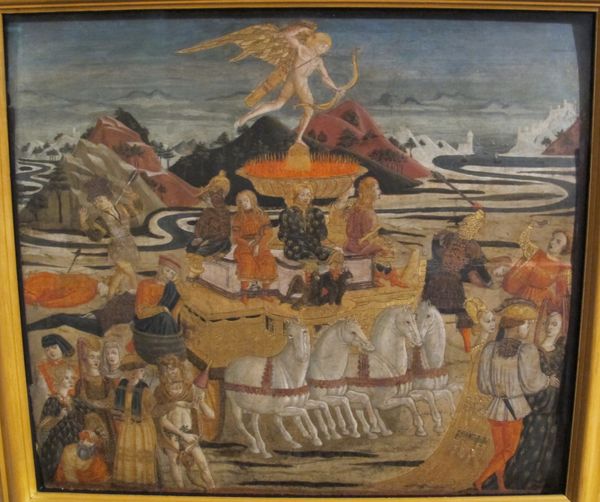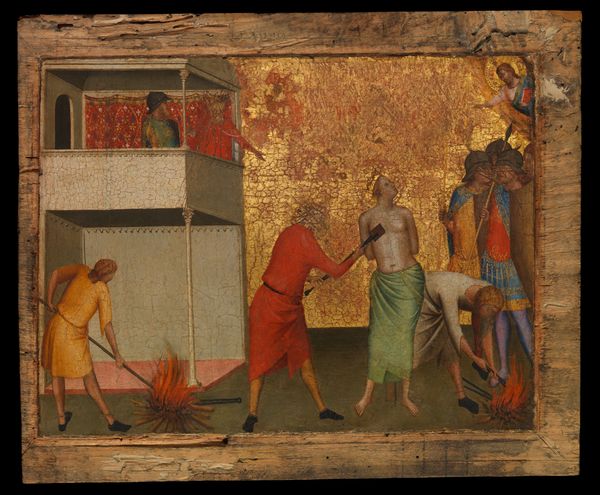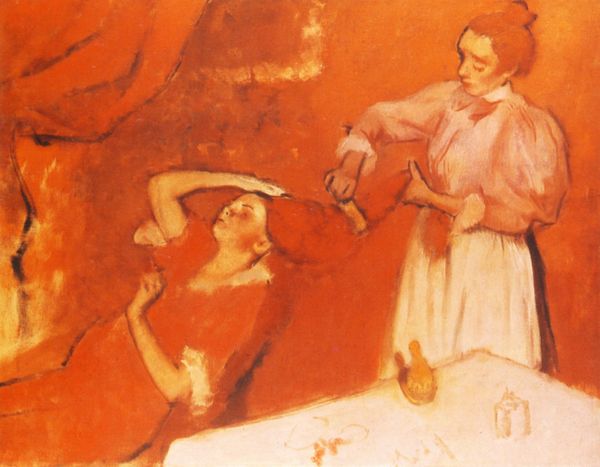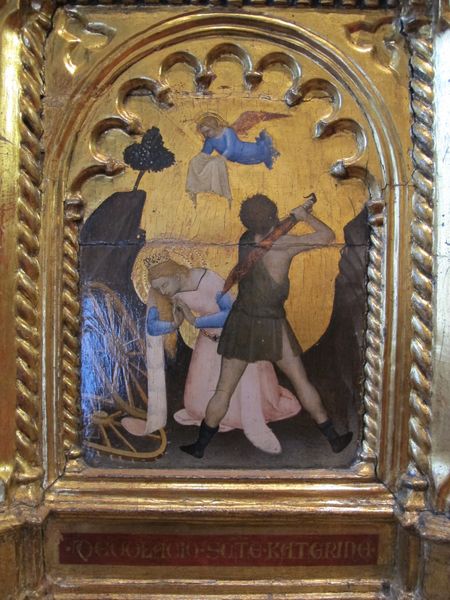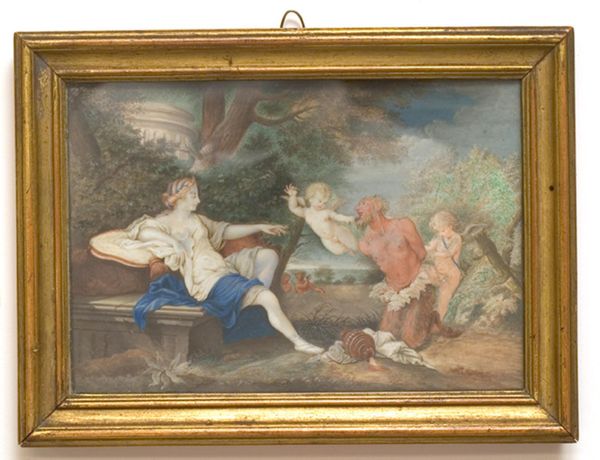
painting, oil-paint
#
narrative-art
#
painting
#
oil-paint
#
figuration
#
oil painting
#
mythology
#
history-painting
#
italian-renaissance
Copyright: Public domain
Editor: Here we have Francesco Botticini's "Tabernacolo Di S. Sebastiano," created around 1480 using oil paint. It strikes me as a somewhat unsettling scene, with figures engaged in violent actions but depicted with almost a detached formality. What do you see in this piece, especially in terms of its symbolism? Curator: The power of this painting lies in its layered symbolism. We see Saint Sebastian, a figure of strength and resilience, tied to a post as archers aim at him. Arrows, throughout history, can represent pestilence, or divine wrath but here, perhaps arrows become symbolic of challenges to one’s beliefs. Notice the architectural details – classical yet incomplete. Editor: The architecture being unfinished feels symbolic itself. Do you see any particular message being conveyed through the composition? Curator: Consider also the figures surrounding him. Are they purely antagonistic, or do they represent different aspects of temptation or internal struggle? Even their clothing becomes a signifier; each colour, each fabric carries cultural weight. Renaissance paintings did not portray random dress; people wore garb with associated meaning to onlookers. This element serves as a cultural anchor, ensuring stories are passed down through iconography. It's less about simply showing an event, more about embedding memory. Editor: That’s fascinating! It gives such a depth to something that initially seems like a straightforward depiction of a historical or religious event. Curator: Precisely. Botticini masterfully interweaves cultural memory with immediate visceral impact. Every visual choice builds upon historical, mythological, and cultural meanings, ensuring its narrative and power echo through time. It leaves you pondering more than initially apparent. Editor: I definitely agree. Seeing it as a combination of memory, narrative, and cultural references helps me look beyond just the literal interpretation.
Comments
No comments
Be the first to comment and join the conversation on the ultimate creative platform.

